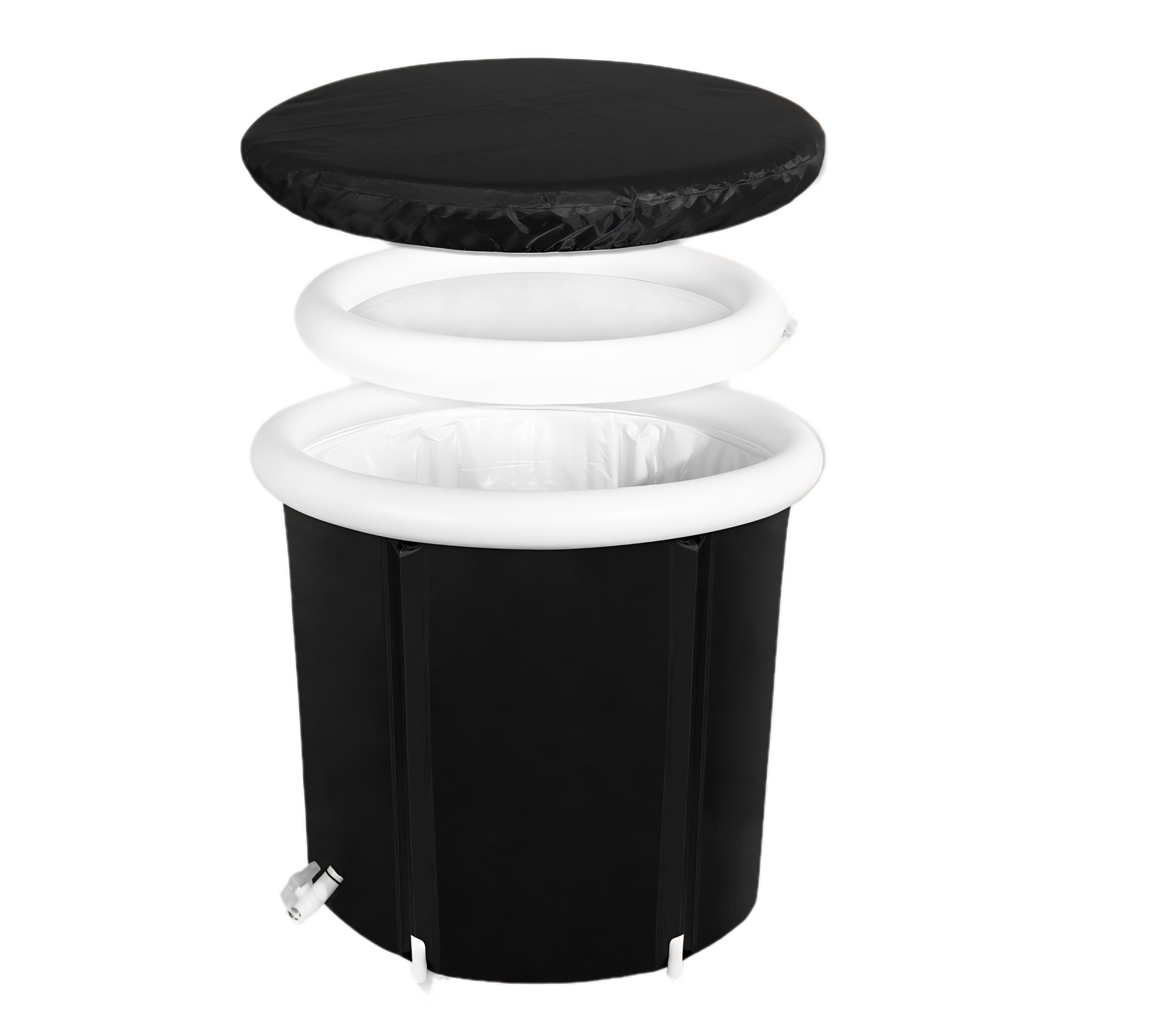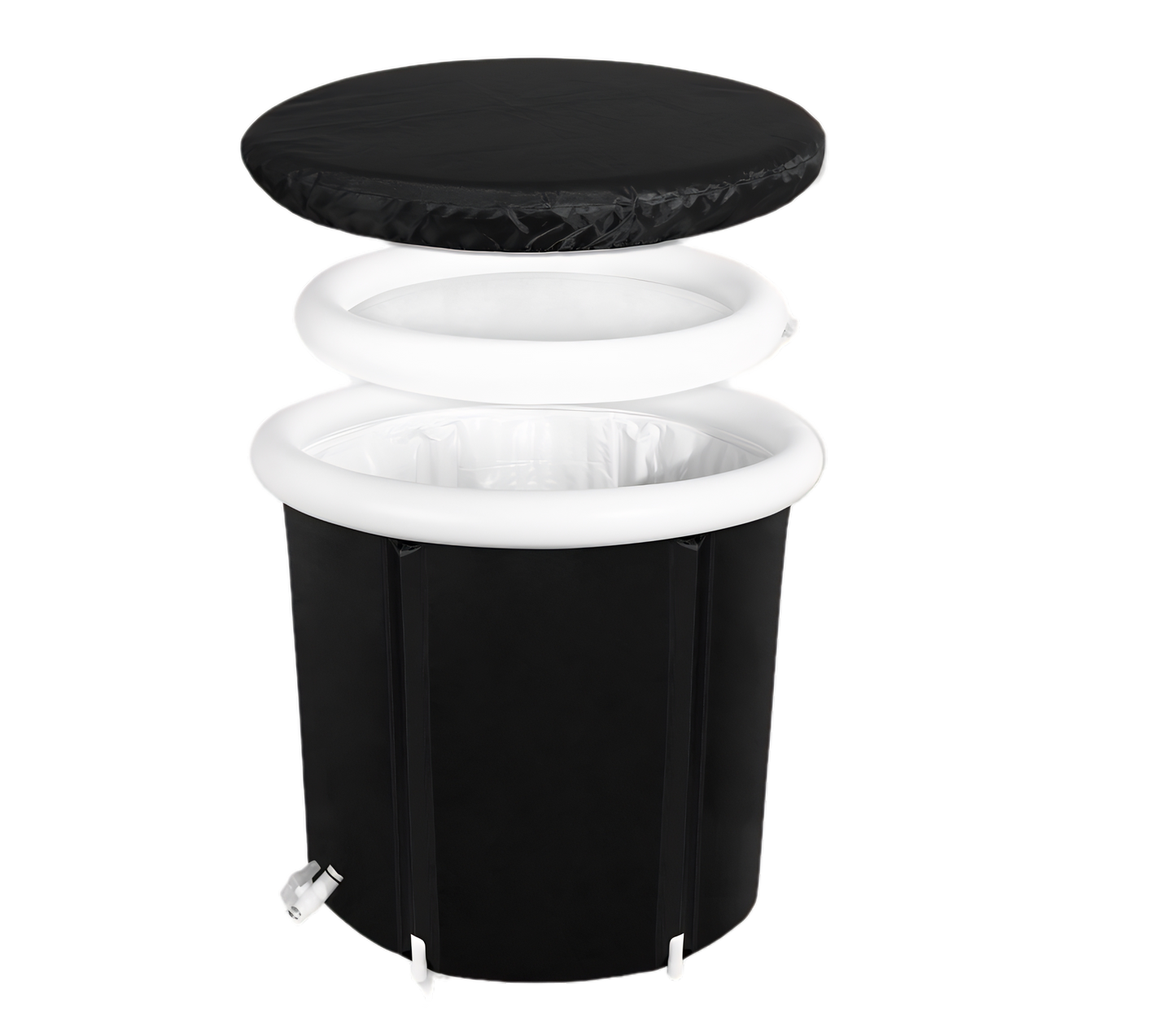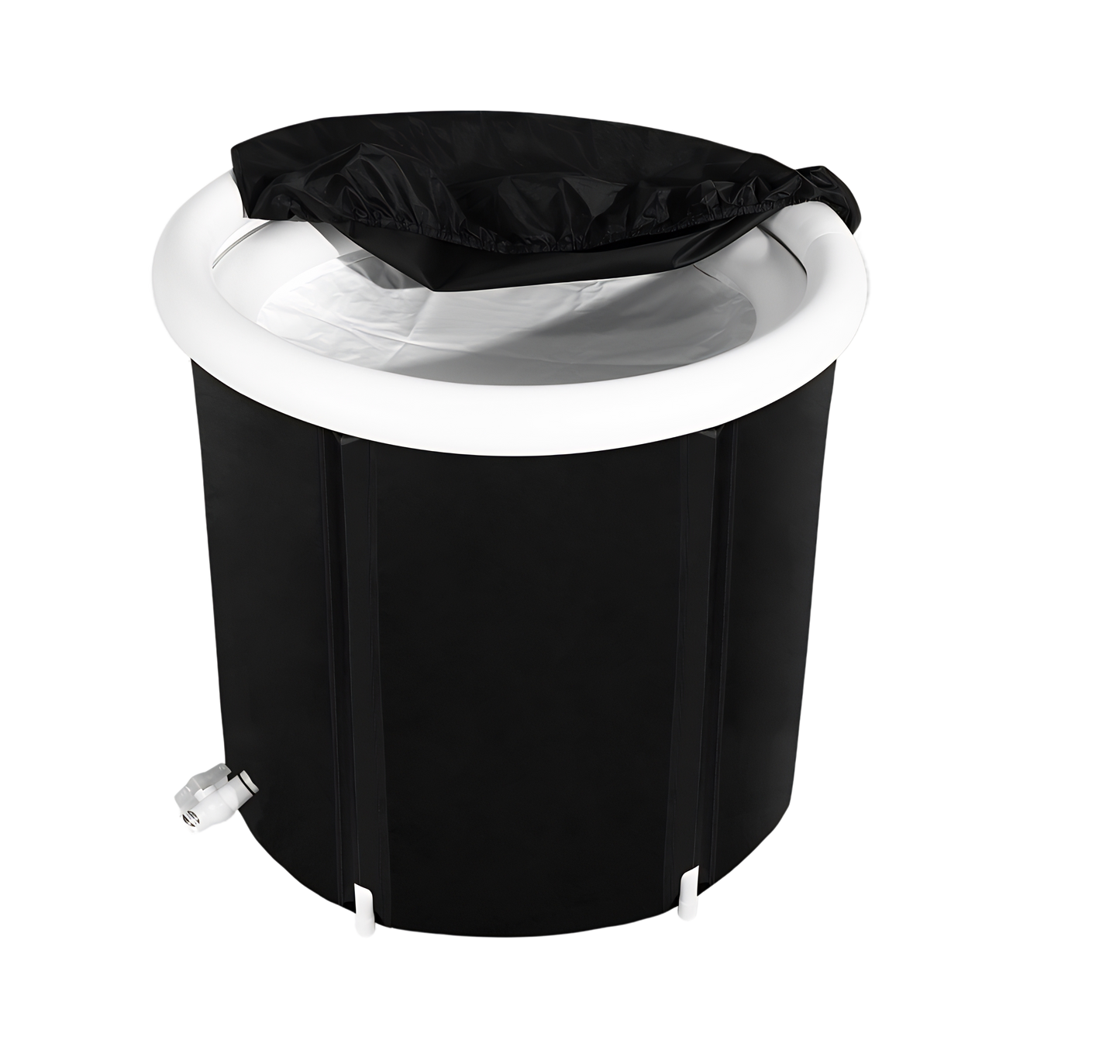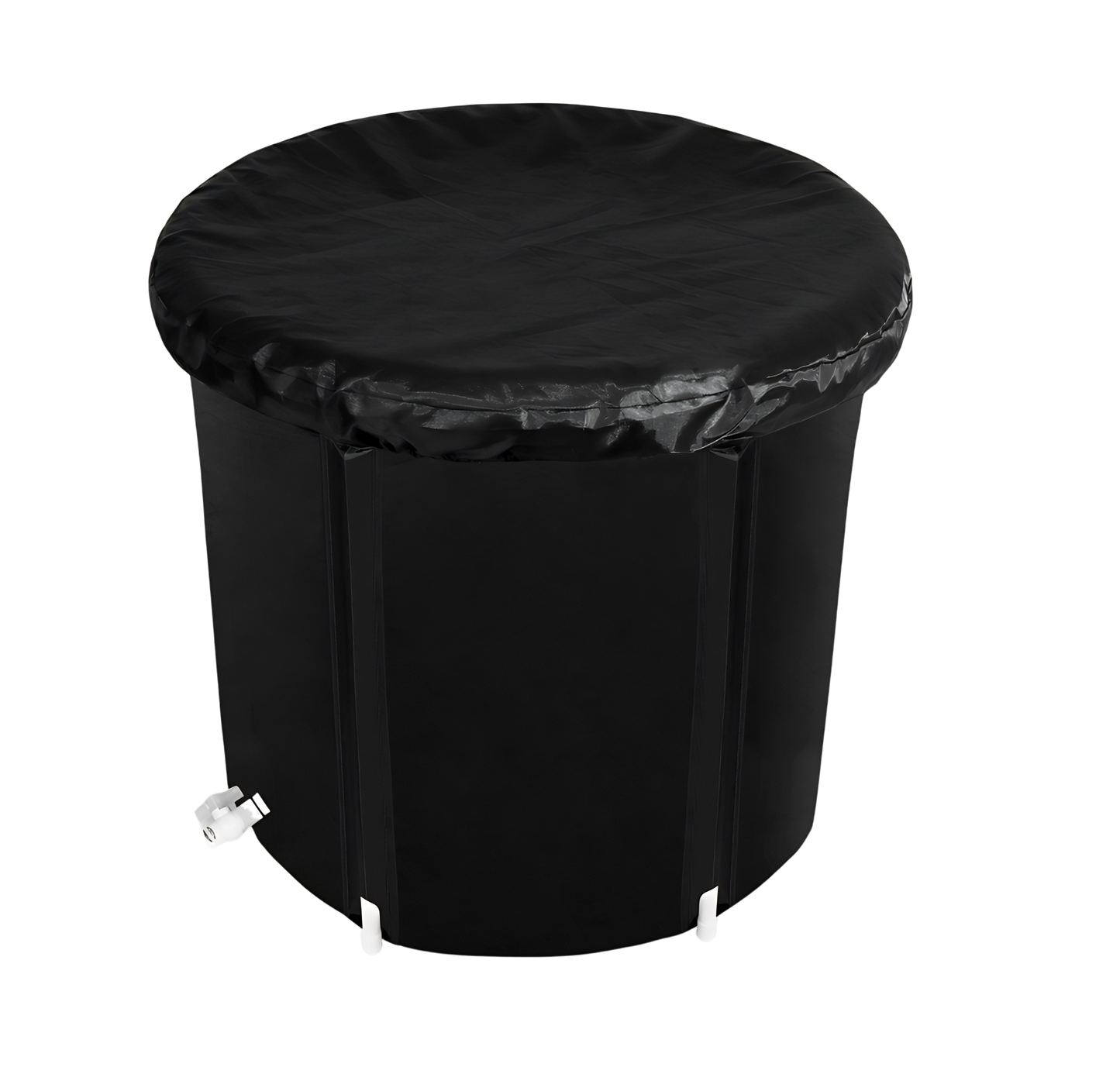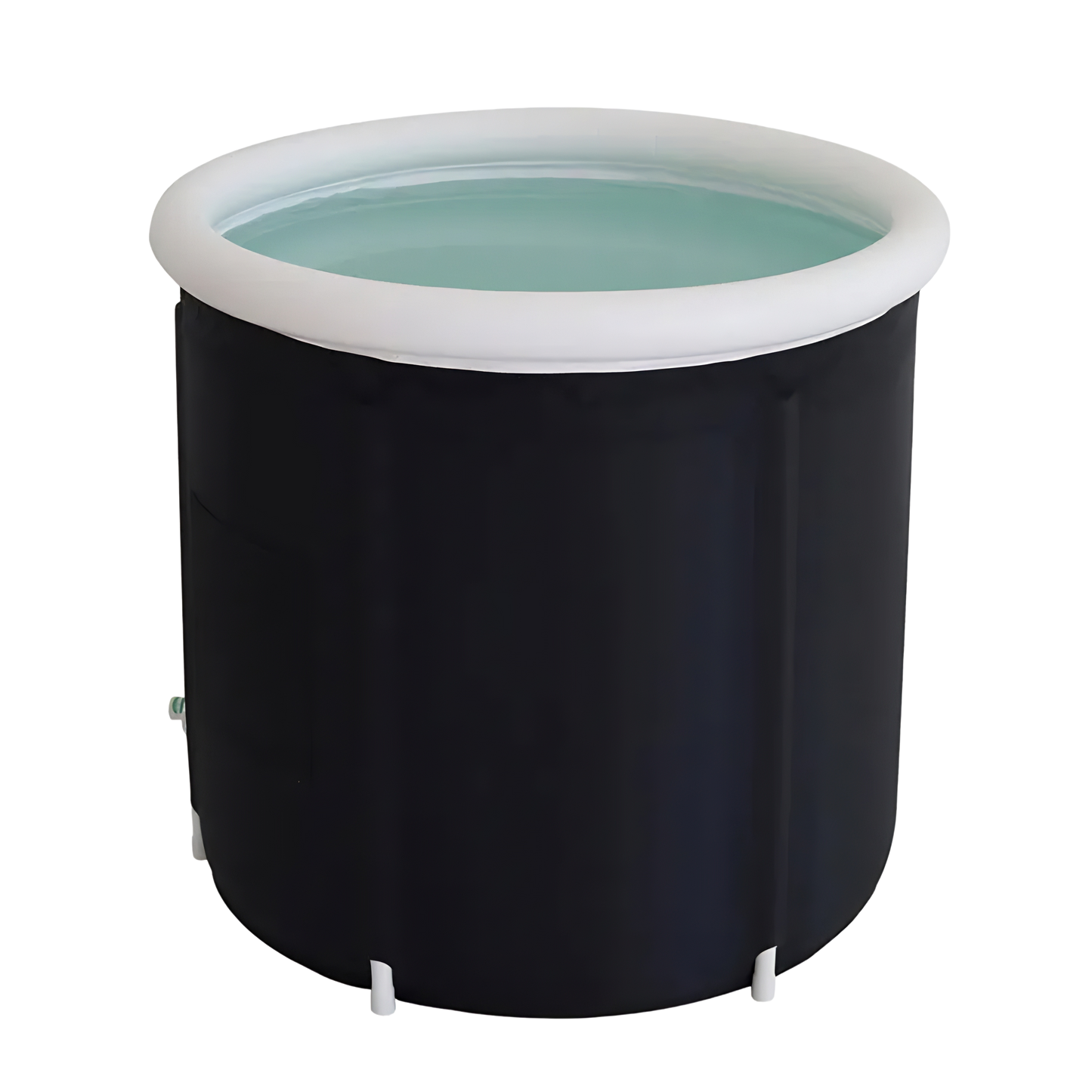Introduction: A Chill Pill for Anxiety?
An Unseen Battle: Understanding Anxiety and Its Impacts
Anxiety is like an uninvited guest that overstays its welcome. It not only affects mental health but also leaves physical impacts in its wake, affecting a staggering number of people worldwide.
According to the World Health Organization, approximately 1 in 13 globally suffers from anxiety, making it the most common mental health disorder. Plagued by persistent worries, irrational fears and a constant sense of doom, individuals grappling with this invisible enemy often find their day-to-day lives disrupted.
The impacts range from sleep disturbances to irritability, difficulty concentrating and even physical symptoms such as heart palpitations and shortness of breath. Yet amidst this struggle lies hope as society continually explores new avenues for managing anxiety.
The Big Freeze: Ice Baths As The Cool New Trend In Wellness
In the quest to tame the beast called 'anxiety,' people are turning towards unconventional methods - one of these being ice baths or cold exposure therapy. Long embraced by athletes for its recovery benefits, ice baths have now permeated mainstream wellness culture.
A quick scroll through social media platforms will reveal images of people willingly submerging themselves in tubs filled with bone-chilling ice water. It's not just thrill-seekers who are diving into this trend; celebrities like Wim Hof (also known as "The Iceman") and Tony Robbins swear by their daily icy plunge as an integral part of their wellness regimen.
The intrepid souls who engage in this frosty ritual claim a plethora of benefits ranging from increased alertness to improved mood states - even suggesting that ice baths could be an effective tool in combating anxiety disorders. So let's dive right into understanding how these frigid waters might hold the key to quelling anxiety.
The Science of Cold Exposure: An Icy Revelation
The Body's Response to Cold Immersion: From Shiver to Quiver
When someone plunges their body into a bathtub filled with ice cubes, their initial response could potentially be a gasp or even a yelp. This is because the human body isn't naturally equipped to handle such extreme temperatures. As you can imagine, this certainly gives your system a jolt.
There's rapid skin cooling, leading to an immediate contraction of blood vessels (vasoconstriction), which in turn increases your blood pressure and heart rate. The heart pumps faster sending warm blood around the body in an attempt to preserve core body temperature.
Ice Baths and Stress Response: A Paradoxical Pairing?
Ironically, an ice bath might just be what you need when you're feeling ‘hot under the collar’. Yes, it sounds counterintuitive but stay with me here.
When your body faces a stressor - like icy water - it activates what’s known as the fight-or-flight stress response. This involves releasing stress hormones like adrenaline and cortisol into your bloodstream that prepare your body for potentially threatening situations by increasing alertness and energy levels.
And guess what? An ice bath isn't considered comfortable or soothing by most standards, hence it qualifies as a stressor!
Now before you dismiss this as some sort of cruel joke nature played on us, here's something intriguing - regular exposure to cold water might actually help develop resilience towards everyday life stresses over time. It’s similar to how 'muscle memory' works; only this time, we’re talking about 'stress memory'.
Endorphins: The Feel-Good Chemicals; Cold Exposure
Now let's talk about endorphins – our bodies’ own little superheroes without capes! They’re neurochemicals, produced by the pituitary gland and the central nervous system, famous for their pain-relieving and mood-enhancing qualities. When you immerse yourself in an ice bath, your body responds to the cold shock by releasing endorphins in an effort to counteract discomfort and potential pain.
These natural 'happy hormones' have a similar effect on our brain as opioids - they can act as analgesics (painkillers) and also generate feelings of pleasure or euphoria. So apart from making you feel momentarily invincible against the biting cold, these endorphin rushes might also contribute to reducing anxiety symptoms.
Kind of makes you appreciate ice baths in a whole different light doesn’t it? Well, let’s not get ahead of ourselves; we still have a lot more to uncover.
Ice Baths and Anxiety: An Unlikely Pair?
A Closer Look at Studies on Cold Exposure and Anxiety
A delve into the world of scientific research presents surprising links between cold exposure, such as taking ice baths, and reduced anxiety symptoms. The underlying theory revolves around the idea that putting your body under a certain level of stress can train your nervous system to handle anxiety more effectively.
A study published in the Nature Journal in 2018 gives credibility to this concept. The research demonstrated that a specific form of cold shock protein called RNA-binding motif protein 3 (RBM3) got activated when subjected to cold temperatures, leading to neuroprotective effects.
Furthermore, a separate investigation exposed participants to cryotherapy sessions - another form of extreme cold treatment. Remarkably, many reported significant reductions in their anxiety scores after several weeks of therapy.
Real People, Real Experiences: Personal Accounts on Ice Baths and Anxiety
While empirical evidence offers insight into the connection between ice baths and anxiety management, personal anecdotes add layers of relatable human experience. For instance, consider Jane's story – she turned to ice baths during an unusually stressful period at work. Initially skeptical but desperate for relief from her heightened state of constant worry, she found that the immediate shock from plunging into icy water forced her mind away from incessant anxious thoughts.
Then there’s Mark who battled crippling social anxiety for years before discovering ice baths through a wellness podcast. Ice bathing became his regular morning ritual - his haven away from society's prying eyes where he could focus solely on himself and his breathing.
He notes how this practice has had dramatic benefits for his mental health over time. These diverse anecdotes underline one common theme – when it comes to managing stress or anxiety through unconventional methods like taking an ice bath; it seems there’s some substance beneath the shock factor.
Diving Deeper into the Cold: The Wim Hof Method
The Iceman Cometh: Who is Wim Hof?
You may not recognize the name right away, but if you've delved even slightly into the world of cold exposure, you're likely to have come across this intriguing character. Wim Hof, affectionately known as "The Iceman", hails from the Netherlands and has made quite a splash (pun intended) in wellness circles with his unique method.
He holds 26 world records, including one for taking the longest ice bath and climbing Mount Kilimanjaro in nothing but shorts and shoes. His philosophy revolves around a three-pillar system of cold exposure, breathing techniques, and meditation.
Braving the Elements: What's The Wim Hof Method All About?
In essence, The Wim Hof Method tries to tap into our primal physiology through a trifecta of focused breathwork, consistent mental focus (or meditation), and regular cold exposure. It sounds simple enough on paper but accomplishes something rather extraordinary in practice. Body temperatures that would normally plunge alarmingly during prolonged cold exposure stay surprisingly stable during his exercises.
This is largely credited to an adrenaline response that’s much higher than normal – almost akin to somebody bungee jumping! The adrenaline rush then gives way to a release of endorphins – body’s natural painkillers which impart a sense of calm.
The Frosty Prescription: Ice Baths and Anxiety Reduction
Now where does anxiety fit into all this? A study by Matthijs Kox et al. (2014), demonstrated that people trained in the Wim Hof Method could voluntarily influence their autonomic nervous system - previously thought impossible without invasive procedures or medication! It suggested that we might be capable of consciously steering our immune response, leading to lesser inflammatory reactions.
Since anxiety is often linked to overactivity of certain parts of the nervous system and an inflammation response in the brain, it's possible that this method could have a calming effect. However, more research is required before we can say for certain that taking a dip in icy water can help keep anxiety at bay.
Taking the Plunge: How to Safely Try an Ice Bath at Home
Pros and Cons - A Nippy Notion for All?
In this pulsating world where anxiety is a common bedfellow, ice baths seem to promise a novel panacea. However, like all things in life, they are not devoid of their pros and cons.
On one hand, they offer an invigorating way to kick-start your body's natural healing mechanisms. The cold exposure can boost circulation, aid muscle recovery, improve sleep quality and yes, potentially ease symptoms of anxiety too.
On the flip side though, ice baths are certainly not everyone's cup of tea... or rather bucket of ice. It's literally a chilling experience that can be harsh on the body if not done correctly or wisely.
People with certain health conditions such as Raynaud’s disease or cardiovascular issues should steer clear due to the extreme stress it can place on the body. Also remember, comfort is key in any anxiety management technique and for some, an ice bath might just induce more stress than relief.
Guidelines for a Safe Ice Bath Experience
Venturing into icy waters might seem daunting, but with the right guidance, it can be a refreshing experience. Fear not, dear readers, for we've got you covered!
Here are some essential tips for those brave souls ready to embrace the chill. First and foremost, it's crucial to ensure you don't have any health conditions that might be aggravated by sudden cold exposure. If you're unsure, it's always best to consult with a professional.
Begin by acclimating your body to cooler temperatures. Starting with a brief cold shower can be an excellent introduction before diving into the world of ice baths. When you're geared up for the real deal, ensure safety first: opt for a sturdy tub with a balanced mix of water and ice, aiming for a temperature range of 10-15 degrees Celsius (50-59 degrees Fahrenheit).
The goal is to immerse yourself up to the neck, spending around 15 minutes in this chilly embrace. Remember, it's about relaxation, not a race, so take your time entering the water.
Always be attuned to your body's signals. If you experience intense discomfort or excessive shivering, it's a sign to exit and warm up.
Lastly, never embark on this icy journey alone. Having a companion ensures safety and can make the experience more enjoyable. So, armed with these insights and our essential dos and don'ts, are you set to conquer the cold and rejuvenate your senses?
Contrasting Views on Ice Baths for Anxiety
A Frosty Reception: Critiques and Cautions from Health Professionals
The use of ice baths as a method for anxiety relief has sparked interest, but it's essential to approach this with an informed perspective. There are potential health risks linked to cold exposure therapy, such as hypothermia, shock, and in extreme scenarios, frostbite.
While the benefits of cold water immersion for athletic recovery are discussed, its direct impact on mental health, especially anxiety, is still being explored. Notably, some research, like our article on ice baths and anxiety, suggests that ice baths might indeed help alleviate anxiety symptoms. However, it's crucial to note that many studies in this area have small sample sizes, which can influence the breadth of their conclusions. In contrast, cognitive behavioural therapy (CBT) remains a widely accepted and effective treatment for anxiety disorders, providing results without the physical risks that might come with other methods.
Defrosting Anxiety: Alternative Methods for Managing Anxiety
While ice baths undeniably offer an invigorating rush like no other anxiety management technique might provide, it’s worth exploring some alternative practices that could also serve as potent stress busters. Meditation is essentially the granddaddy of relaxation techniques and has proven to significantly reduce anxiety levels in regular practitioners over time.
Mindful Practices

Yoga combines physical postures with mindfulness practice offering dual benefits of physical fitness along with mental peace. Breathing exercises such as those practised in pranayama or during Wim Hof's own method can certainly be adopted minus the icy plunge with beneficial effects on calming anxious thoughts.
Physical Exercise

For those who prefer a more active approach to quell their inner turmoil - aerobic exercises such as running, cycling and swimming have been shown to boost endorphin levels, providing an overall mood lift. Never underestimate the power of a good old chat!
Psychotherapy

Psychotherapy, particularly cognitive behavioural therapy (CBT), is regarded as one of the most effective treatments for anxiety disorders. It helps individuals identify unhelpful thought patterns and develop more positive cognitive behaviours.
In essence, while ice baths may be viewed as a cool technique to manage anxiety for some, it’s vital to remember it’s not the only option out there. A holistic approach integrating physical and mental health practices could lead to more sustainable results in managing anxiety.
Conclusion: Are Ice Baths a Cool Solution for Anxiety?
Recapping Our Icy Dive into Anxiety Management
A deluge of research and anecdotal evidence has cascaded before us, each droplet adding to the riveting rivulet of our understanding of ice baths and their potential use in managing anxiety. Remember, our bodies respond to cold immersion with a stress response that can potentially trigger the release of endorphins. These endorphins, often called 'feel good' hormones, could play a crucial role in alleviating symptoms of anxiety.
We've also navigated through the intriguing world of the Wim Hof Method and its connection to both ice baths and anxiety reduction. We've explored how this method champions controlled breathing exercises along with ice baths as a holistic approach to wellness.
We have acknowledged that there are differing opinions on this matter from health professionals. Like any treatment option, it’s essential to be cognizant of one's personal health conditions before stepping into an icy plunge pool.
A Personal Shiver Down Memory Lane
In my own experience with ice baths – yes, I did take the plunge for first-hand knowledge – I found them an invigorating yet challenging experience. The initial shock was almost overwhelming as my body braced itself against the chilly onslaught.
However, when emerging from these frosty depths there was an undeniable sense of accomplishment and clarity which seemed to echo some degree of the positive effects people have claimed. But do I believe they're a magical cure-all for anxiety?
Not quite so fast! While they may offer respite for some individuals battling anxiety or stress-related issues - like many things in life - it's probably not going to be everyone’s cup of (icy) tea.
The bottom line is that if you're battling anxiety, it's important to explore a multitude of approaches and find the one that suits you best. Ice baths might just be the tip of the iceberg in your journey to a calmer, less anxious life.

